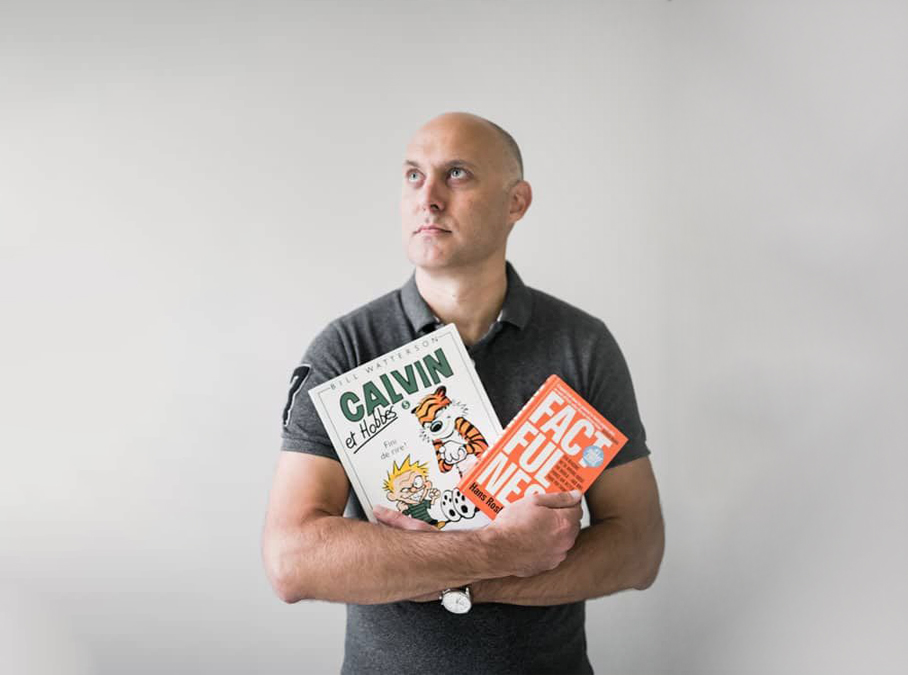It’s no secret that we’re in one of the best funding eras in history for technology startups. Nearly every day, it seems a TechCrunch article comes out on a new SaaS startup raising gazillions in new VC funding. With so much dry powder from VCs, angels, syndicates, SPACs — it should be a slam dunk for every founder to rapidly raise money for their project, right?
At AV8 Ventures, we see hundreds of startup pitches each month and reality is more sobering — while some startups do raise quickly based on the rockstar raw talent of the team, prior successful exits, or deep longstanding investor relationships — the vast majority of entrepreneurs will find their first institutional raise as a long, tedious, and sometimes exasperating experience.
In fact, the most common question I’ve been asked over the years is: what makes a successful VC pitch? Students from my Stanford entrepreneurship course, members of my Slack workspace and Clubhouse rooms, and countless Founder intro meetings seem to always have this topic brought up. So in this blog, I’ll lay out a few common mistakes to avoid when pitching investors. Here we go with a Top 5 countdown:
5. Pain: While nearly all pitches include a problem statement slide, it’s surprisingly common for these to not be real pain points but rather “nice-to-haves” or problems disguised as product features. It could also be the problem isn’t articulated clearly or it’s the symptom of a different underlying challenge. Whatever the reason, investors need to be convinced you’re solving a mission-critical pain point for a large (or rapidly growing) market opportunity. As an aside, sometimes even when the pain is understood, it’s also well established as a long-festering challenge for decades. In that case, it’s critical for you to address “why now” and clearly articulate what has changed (tech, market, customers, policy) that now creates a unique inflection point for the market to finally be ripe for disruption. If investors are skeptical of the degree or criticality of your pain point or the opportunity size where these pains exist, your pitch is virtually dead on arrival — the best technology is irrelevant if willingness to pay for big hairy problems is not credible.
4. Uniqueness: Empathy is an important attribute for founders when hiring talent and supporting customers. But a little empathy for VCs can go a long way as well. More times than not, the investor you’re pitching has seen a similar pitch before — it could be a different product design point or go-to-market (GTM) motion, but assume VCs have seen at least a handful of other startups pitching the same concept as yours. A common Founder mistake is not clearly articulating the unique differentiation of your product vision from existing alternatives or competitors. VCs constantly context switch between pitches and after a while, similar pitches all start to blend together. Help the investor separate your unique signal from the market noise by convincing us what your “moat” is and why it’s defensible over time against copycats or competitive encroachment. Do you have a data moat based on proprietary data generation or unique ML algorithms/models, or a differentiated 2-sided marketplace with natural low-friction network effects that are hard to replicate, or deep domain expertise with complex heuristics and established customer and partner relationships that decades to successfully establish — why is your team, your product, your sales strategy going to dominate to be a category winner and what do you uniquely see evolving in your product/market that others don’t see or would find extremely difficult to successfully execute upon?
3. ICP Persona: It continues to amaze me how otherwise brilliant founders (especially technical ones) fail to clearly articulate their ideal customer profile (ICP), and in particular the specific persona they are targeting as users or buyers (or both). A surprisingly common mistake is Founders diving into the product details and how it solves problems for “them”, “users”, “customers” or some other vague, generic pronoun. Likewise, many technical Founders will spend way too much time talking about product features and shockingly little/no time specifically addressing benefits and ROI. As a Founder, you should be specific on the type of company (industry, size), geography, persona (department/title/role), the critical challenges these people need to solve, and what its worth to them to solve it (and how those benefits are measured and monetized). Explain what alternatives they’ve tried before and why they failed, why your product uniquely solves their pain 10x better than any previous attempts, and lay out the typical buying process (and sales motion) for your personas when validating the value prop/ROI to make a purchase decision. Ideally show examples of before vs. after to illustrate contrast and quantify the business outcomes that compel your economic buyers to be willing to pay.
2. GTM Scale:Digital media has fueled the perception of fame, fortune, and power that comes with being a rockstar unicorn CEO. In reality, the dirty little secret is the vast majority of startups aren’t built for venture-scale. And that’s ok for Founders that want to build a tech-enabled startup with the potential to level off at a sub-$100M ARR run-rate. Small business tech startups can be quite profitable…but they won’t be interesting to institutional VCs. Another common mistake for Founders seeking venture funding is focusing too much on early design partner traction and not enough on conveying the product and customer development vision to achieve non-linear growth (commonly termed a “flywheel effect”) in a huge or potential to be huge market. Customer traction is great, but any commercial wedge must have a plausible path to at least a billion-dollar revenue business in order to be considered venture-scale. What is your GTM strategy and business plan to reduce friction and enable repeatable, scalable revenue expansion? Without a clear vision, strategy, and plan to execute on an S-curve exponential trajectory, VCs likely won’t develop the conviction that you’re venture-scale fundable.
1. Storytelling: Probably the most overlooked skill set in a Founder CEO is the dark art of persuasion. You could have 100 different Founders pitch the same pitch deck and only a handful will come out with a term sheet. Why is that? Just as important as the content of your pitch is how you position and deliver it — both style AND substance are critical success factors. A common mistake for first-time and technical founders is over-relying on slide content — reading off slides in a rigid sequential order, or going too deep into features/product architectures or tactical/operational details. In my experience, the Founders most successful at fundraising are not presenting a slide deck but rather leveraging slides to have a meaningful conversation and to tell a compelling story, often grounded by their own personal experience and journey. As Founders, don’t be afraid to show your passion and conviction and be flexible — if there are specific investor questions, don’t stick to your script but rather answer the question directly and flip to an appropriate slide as needed. Investors often barrage founders with questions from all angles — the most successful Founders are direct and thoughtful in their responses, in part because they’ve already thought about it long beforehand. The best Founder CEOs eat, sleep, breathe their startup 24×7 — this is their life and they’re 100% in it to win it.
In addition to common pitch mistakes, I often get asked about what constitutes a strong team at inception and beyond, how to identify the right investors and reach out, how to successfully address due diligence and negotiate term sheets, and how to formulate a product and customer development plan that scales. All good topics for future blog postings.


0 Comments